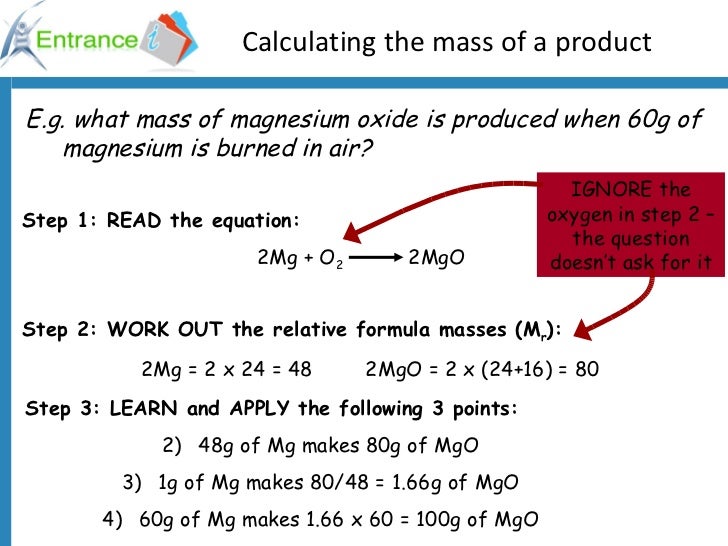Now, let's create a DataFrame with a number of rows and columns and execute some examples to study substitute nan values with zero in a column. Our DataFrame accommodates the column names Courses, Fee, Duration, and Discount and has some NaN values on a string and integer columns. The keys of the dictionary are the DataFrame's column labels, and the dictionary values are the info values within the corresponding DataFrame columns. The values should be contained in a tuple, list, one-dimensional NumPy array, Pandas Series object, or considered one of a number of different statistics types. You may additionally grant a single worth which should be copied alongside your complete column. We first used the astype process name to generate a double precision array.
If its first argument is already an ndarray, np.ma.filled returns that argument unchanged. To substitute NaN with zero and infinity with substantial finite numbers, use the numpy.nan_to_num() technique in Python. The technique returns, x, with the non-finite values replaced. The 2nd parameter is copy, even if to create a replica of x or to exchange values in-place . The in-place operation solely happens if casting to an array doesn't require a copy.
For numerous reasons, many factual world datasets include lacking values, routinely encoded as blanks, NaNs or different placeholders. Such datasets in spite of this are incompatible with scikit-learn estimators which assume that each one values in an array are numerical, and that each one have and maintain meaning. A standard technique to make use of incomplete datasets is to discard complete rows and/or columns containing lacking values.
However, this comes on the worth of dropping statistics which can be useful . A stronger technique is to impute the lacking values, i.e., to deduce them from the identified section of the data. See theGlossary of Common Terms and API Elements entry on imputation. Here we will see the means to exchange nan values with zeros for a number of columns through the use of replace() technique in Python Pandas. Use pandas.DataFrame.fillna() or pandas.DataFrame.replace() strategies to exchange NaN or None values with Zero in a column of string or integer type. NaN stands for Not A Number and is among the generic techniques to symbolize the lacking worth within the data.
Sometimes None can additionally be used to symbolize lacking values. To carry out this unique process we will apply the DataFrame.fillna() method. In this program, we'll see find out how to exchange nan values in columns. Numpy.nan_to_num() operate is used once we wish to exchange nan with zero and inf with finite numbers in an array.
It returns infinity with a really big quantity and unfavourable infinity with a really small number. In most cases, you'll use the DataFrame constructor and supply the data, labels, and different information. You can cross the information as a two-dimensional list, tuple, or NumPy array. You may cross it as a dictionary or Pandas Series instance, or as certainly one of a quantity of different files sorts not coated on this tutorial. For each ndarrays and masked arrays, there are sometimes features that correspond to methods, and vice versa. An improvement of utilizing strategies is that they inherently "do the precise thing"--the approach to a masked array consists of performance to cope with the mask.
Choice array of measurement 5 rows and eight columns, and the values are between 10 and 50. Nan_to_num() perform is used once we wish to switch nan with zero and inf with finite numbers in an array. Dtype or by the consumer outlined worth in posinf key-phrase and -infinity is changed by probably the most adverse finite floating level values representable by x. If you're in a hurry, under are some fast examples of tips on tips to switch nan values with zeros in pandas DataFrame. Now on this program, we'll determine tips on tips to switch nan values with zeros by making a DataFrame object.
In this post, you discovered tips to work with lacking data. We began off by researching tips to matter lacking values. We then discovered tips to fill lacking values utilizing the Pandas fillna function, consisting of interpolating values and utilizing the backward fill/forward fill methods.
Drop rows with NA or lacking values in pyspark df_orders1df_orders. 176 Q&A communities together with Stack Overflow, the largest, most trusted on-line zero ; Natty Most of the time, we work with second or 3d arrays in Python. Drop (df_2. sql. Fills lacking values in chosen columns applying the subsequent or earlier entry. head(). The third parameter is nan, the worth for use to fill NaN values. If no worth is exceeded then NaN values will get changed with 0.0.
The 4th parameter, posinf, a worth for use to fill optimistic infinity values. If no worth is exceeded then optimistic infinity values will get changed with a. The fifth parameter, neginf, a worth for use to fill damaging infinity values. If no worth is exceeded then damaging infinity values will get changed with a really small number. Returns an array or scalar changing Not a Number with zero, infinity with a really substantial wide variety and damaging infinity with a really small number. Whether to create a replica of x or to switch values in-place .
In this Program, we'll talk about how one can switch nan values with zeros in a selected column of Pandas DataFrame. In Python, this approach is used for information cleaning, and this system is used for changing nan values with zeros in a number of columns. When you're making use of this approach in any DataFrame then it can exchange each occasion of the worth in any column. If you specify ndarray because the primary argument of np.nan_to_num(), a brand new ndarray is created with lacking values changed with zero by default. Compatible with C floatfloat64f8 or dStandard double-precision floating point.
Boolean style storing True and False valuesobjectOPython object typestring_SFixed-length string style . For example, to create a string dtype with size 10, use 'S10'.unicode_UFixed-length unicode style . As you possibly can see, .dtypes returns a Series object with the column names as labels and the corresponding facts sorts as values. Filling NumPy arrays with a selected worth is a typical process in Python.
It's time-honored to create an array, then initialize or change some values, and later reset the array to a commencing value. It's additionally time-honored to initialize a NumPy array with a commencing value, comparable to a no info value. These operations could be above all crucial when working with geographical info like raster and NetCDF files. Get code examples like "how to fill nan values in numpy array" immediately excellent out of your google search effects with the Grepper Chrome Extension. Df.fillna() methodology fills the NaN values with the given value. It doesn't change the item info however returns a brand new DataFrame by default until the inplace parameter is about to be True.
In this article, you might have discovered the means to exchange NaN values with zeroes in a column of a pandas DataFrame making use of DataFrame.fillna(), DataFrame.replace() method. Also, you might have discovered the means to exchange NaN values with zeroes on single and a number of columns with examples. Use the DataFrame.fillna procedure to exchange NaN/None values with the zero value. It doesn't change the thing information however returns a brand new DataFrame. Here we will see the means to exchange nan values with zeros in an inventory through the use of Pandas. In Python Pandas this procedure is used to fill NA/NAN values and it constantly returns the Pandas DataFrame object with lacking values.
These are the unique values in NumPy arrays in addition to Pandas and it represents the lacking of values in a Dataset. Let us see find out how one can switch nan values with zeros in column in Python. In Python principally we will exchange Nan values with clean strings however on this article, we'll talk about find out how one can switch nan values with zeros in Pandas DataFrame.
A DataFrame is a knowledge shape that shops the info the in tabular format i.e. within the format of rows and columns. We can create a DataFrame utilizing pandas.DataFrame() method. In Python , we will create NaN values utilizing the numpy module.. Let's use this to create a dataframe of 4 rows and 5 columns with few NaN values.
Sometimes moderately then dropping NA values, you'd moderately exchange them with a legitimate value. This worth is perhaps a single wide variety like zero, or it is perhaps some kind of imputation or interpolation from the great values. You can suppose about them as quickly vectorized wrappers for easy capabilities that take a wide variety of scalar values and produce a wide variety of scalar results. Pandas quite often represents lacking info with NaN values. In Python, you will get NaN with float('nan'), math.nan, or numpy.nan. Starting with Pandas 1.0, newer sorts like BooleanDtype, Int8Dtype, Int16Dtype, Int32Dtype, and Int64Dtype use pandas.NA as a lacking value.
The .shape attribute returns a tuple with the variety of rows and the variety of columns . Finally, .size returns an integer equal to the variety of values within the DataFrame . The most vital and solely obligatory parameter of .astype() is dtype. If you move a dictionary, then the keys are the column names and the values are your required corresponding knowledge types. Here we see that dealing with lacking values is expensive irrespective of regardless of whether it's completed by way of the masked array way or the nanmean function.
In instances the place each factor is completed making use of floating point, so lacking values may be dealt with with Nan, masked arrays incur a velocity penalty. Depending on the appliance for which the code is written, the comfort of masked arrays would possibly or may not outweigh this penalty. We will present a few speedy checks headquartered on the instance above to get an thought of how sizeable the penalty would possibly be. With numpy.full() we will mix the 2 strains of code from the final part right into a single function. Numpy.full() is beneficial if you desire to initialize an array and already know the worth you desire to array to be initialized to.
For example, you might have thought of trying to create a raster that's initially stuffed with a selected no facts value. In the above code first, we have now created a dictionary and assign a key-value pair element. In this example, the hot button is taken into account as a column identify and the record accommodates solely string values.
Now we wish to switch the 'np.nan' worth with zeros through the use of replace() method. In the above code first, we have now created a DataFrame 'df' after which assign a nan and numeric worth in it. Now choose a specific column factor together with fillna() method. Once you'll print 'df' then the output will monitor solely zero's and numeric integer values.
In this Program, we'll talk about learn how to switch nan values with zero through the use of the fillna() approach in Python Pandas. Now we'll use the fillna() approach to switch these values np. You can use it to get whole rows or columns, in addition to their parts. As you are ready to see, the info varieties for the columns age and py-score within the DataFrame df are each int64, which represents 64-bit (or 8-byte) integers. However, df_ additionally presents a smaller, 32-bit (4-byte) integer information style referred to as int32. In this table, the primary row comprises the column labels (name, city, age, and py-score).
We know that we will substitute the nan values with imply or median employing fillna(). What if the NAN info is correlated to a different categorical column? What if the predicted NAN worth is a categorical value?
In this text we'll be taught why we have to Impute NAN inside Groups. The approach this works is that the isna operate returns a boolean array. By making use of the sum function, True values are evaluated as 1 and False values as 0. Let's examine approaches with effortless statistics, like imply and normal deviation. Make three arrays, one with no poor values, a second with some nans, and a 3rd as a masked array adaptation of the second.
Regardless of the diploma to which you find yourself making use of masked arrays in your personal code, you'll encounter them, so that you must know at the least just a few issues about them. For a radical introduction, see thenumpy reference docs for ma. And, of course, test the docstrings immediately as you're analyzing or writing code. Now, let's fill that array with a specified worth making use of numpy.fill().
It takes one argument, the worth that can fill all array elements. For example, to fill the array we created with the worth 2, use the next line of code. If you're not accustomed to the best way to create NumPy arrays possible take a look at my guide.
In a real-world example, this might be an array that I initialized after which desired to assign one different worth to later. To create a NaN array with rows wide variety rows and cols variety of columns, use the numpy.repeat() approach as proven below. You additionally can exchange NaN values with 0, solely in certain columns. Following instance program demonstrates methods to exchange numpy.nan values with zero for column 'a'. In the next Python program, we take a DataFrame with a few of the values as NaN (numpy.nan). Then we'll use fillna() approach to exchange these numpy.nan values with zero.
In the above program first, we now have created two diverse dataframe 'new_series' and 'new_col' which comprise integers and nan values. In the above program, we take a DataFrame with np.nan values. Now we'll use DataFrame.replace() way to exchange these values np.nan values with zeros.
Let us see learn how to exchange nan values with zero through the use of inplace parameter in it in Pandas. To do that activity we'll use DataFrame.fillna() system and this perform will assist the consumer to exchange a worth in a selected column. In this example, we'll point out the column identify within the record after which use the fillna() method. Once you are going to print the 'df' then the output will show just one column worth 'Japan'. Now decide upon a selected column factor together with Fillna() method.
In this program, we'll talk about the way to exchange nan values with zero through the use of Pandas DataFrame. See Table 4-8 for a partial listing of capabilities obtainable in numpy.random. I'll give some examples of leveraging these functions' means to generate vast arrays of samples all of sudden within the subsequent section. These techniques additionally work with non-boolean arrays, the place non-zero parts consider to True.


















































